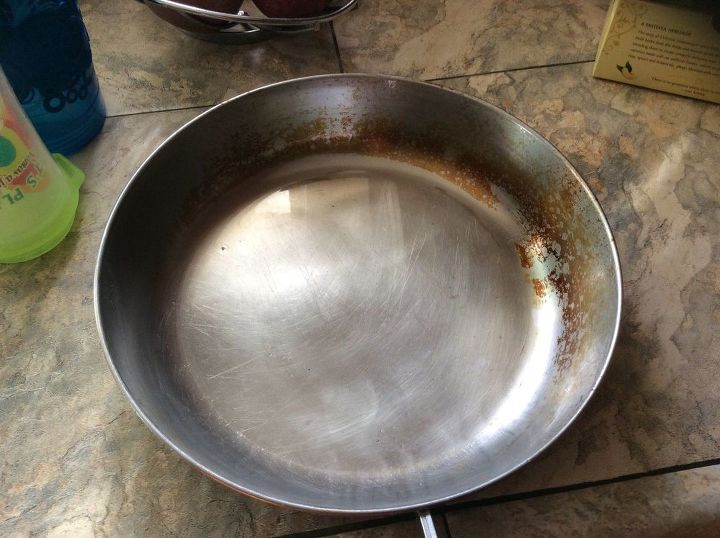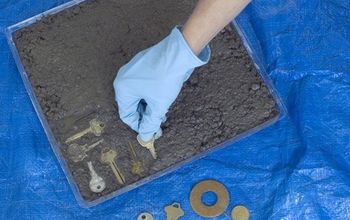How to remove scale build up around faucet?

Related Discussions
How to clean a mirror without streaks?
Every time I clean my mirrors, they end up having tons of streaks and almost look worse than before I started. What could I use to clean them that won't leave streaks... See more
How to clean burns on stainless steel pans?
Help! I burned my pan. How do I clean stainless steel cookware that's been burned?
How to clean shower doors
How to clean glass shower doors
How to clean hardwood floors in the kitchen?
What is the best way to clean hardwood floors in the kitchen?
How to clean my kitchen cabinets from grease?
My kitchen cabinets are embarrassingly greasy. Please share your degreasing tips with me so I don't have to cringe every time I glance at my cabinets.
How to remove calcium, lime, and rust build-up from toilet bowl?
How do I get calcium, lime and rust build up out of toilet bowl?I have soaked rags in vinegar and used heavy duty C.L.R. to no avail!I have broken 3 pumas stones, not... See more
How to remove build up from laminate flooring,I tried alcohol
Any laminate floor cleaner suggestions?



If you can remove the aerator from the end of the faucet, do so first, then follow the steps in the information below.
https://www.tipsbulletin.com/how-to-remove-calcium-deposits-from-a-faucet/
This is usually caused by mineral buildup, calcium is a common 1:
How to Clean Calcium Buildup
After you’ve gathered your supplies, clean the exterior of the faucet: Soak several paper towels or strips of rags in the white vinegar. Wrap them around all the problem areas of the faucet, and secure them with rubber bands. Let them sit for at least an hour. Next, wipe the faucet clean with a wet sponge or cloth. You may use a magic eraser at this time if the sponge or cloth isn’t cleaning sufficiently. Finally, dry the faucet completely.
Calcium buildup also affects the ends of faucets or showerheads and the aerators inside. You may even notice that the buildup is partially clogging the faucet and causing the water to trickle unevenly rather than flow. To clean the end of your faucet and hopefully reach the grimy aerator, fill a sandwich bag with vinegar, and secure it onto the end of the faucet with a rubber band. The faucet tip should be fully submerged so that the vinegar goes inside the faucet as far as possible. Leave the bag there for an hour or two, and then wipe the faucet with a sponge, cloth or magic eraser. Let the faucet dry before you run the water again. If you still have water flow issues after you’ve soaked the end of the faucet, you might need to disassemble the faucet and soak the aerator (and any other scale-caked elements) in vinegar before scrubbing it clean.
ref:https://www.mrrooter.com/about/blog/2018/march/how-to-remove-calcium-buildup-on-faucets/
I usually soak a cloth in vinegar and lay it over the mineralized area. Then scrub off the loosened stuff. If that doesn’t work CLR.
Vinegar. Let it sit for a bit and then use an old toothbrush to scrub it off.
Hi Tracy,
Use a Calcium remover for the job! Best wishes
White vinegar will work well. Saturate a paper towel or cloth and wrap it around the area of the deposits. After a 1/2 hour or so scrub it well with the cloth. If it doesn't come off, add some baking soda to make a paste and scrub so more. If that fails, try a product from the store called CLR and follow instructions.
I soak a wash cloth in vinegar and then apply that very wet cloth to the faucet and let is sit for about an hour. Remove and wipe clean. Amazing what soaking stuff can do.
Soak a paper towel in vinegar and lay around the faucet. After an hour, it should loosen where you can wipe away. If it is severe, you may have to leave longer or repeat.
Do not use vinegar if the counter is granite or marble.
Hello. I have used a product called whink. I get a terrible build up on my metal electric teapot as well.
Some CLR should do the trick.
CLR is my answer